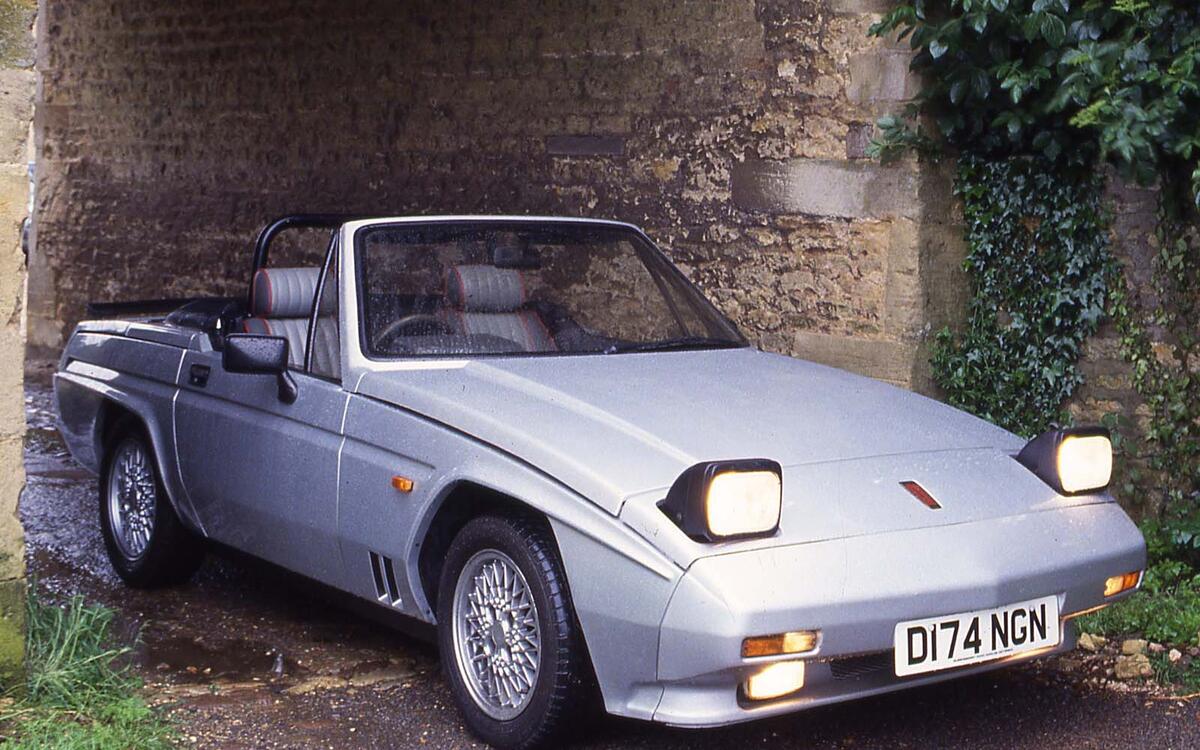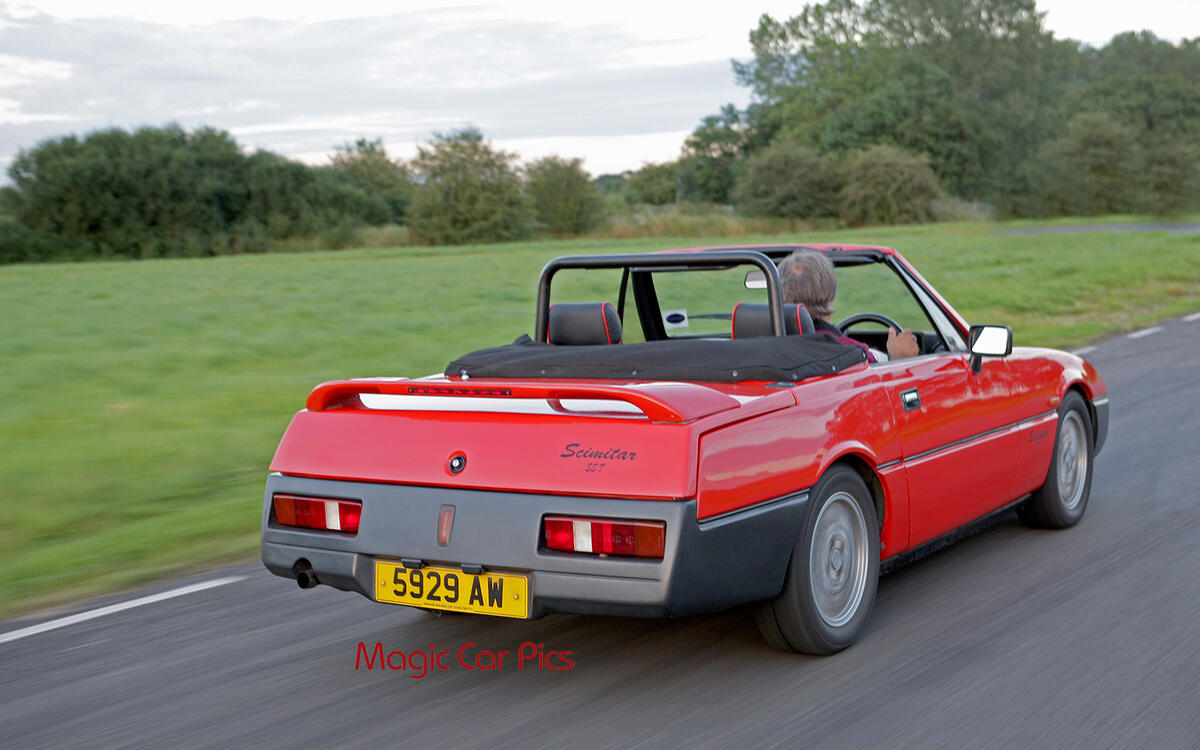 Slide of
Slide of
Introduction
Back in the 1980s the sports car market was exploding. Alfa Romeo launched the GTV6, Ford the Capri, BMW the E30 M3, and Reliant the Scimitar SS1.
When you think of Reliant, you probably think of the three-wheeled Robin, Rialto or Regal and not a low-slung ground-hugger with pop-up headlamps designed to take the fight to the Lotus Elan.
With a name that stood for 'Small Sports 1', styling by the same man who sketched Ferraris and Maseratis, a Lotus-inspired chassis and performance to rival the Toyota MR2 it had all the pieces of a compelling sports car jigsaw.
But where did it all begin? And how did it all end? To find out we decided to delve into its history, questionable build quality and last-ditch attempt to stave off dwindling sales.
 Slide of
Slide of
Reliant GTE
Reviving the Scimitar name, which earned the Tamworth company considerable 1970s credibility with its GTE sports estate (pictured), was always going to be risky. The GTE was a handsome trend-setter, and its reputation was regularly enhanced by the speeding tickets acquired by Princess Anne, who experienced a succession of Scimitars and long-arm apprehendings.
 Slide of
Slide of
Promise
Though quite a different beast from the original Scimitar, the specification of this new Reliant offered plenty to get excited about, not least because there were virtually no affordable two-seat sports cars on sale when it was launched in 1984.
A separate steel chassis may have sounded antique but it enabled tiny Reliant to tool this small sports car, and the plastic panels encasing it were thoroughly modern composites.
 Slide of
Slide of
Ford Power
Power came from Ford’s fairly new overhead cam CVH engines and drove the rear wheels, while its independent suspension – one of the SS1’s most admirable features, featuring race car-like transverse front dampers – provided plenty of back-road entertainment.
 Slide of
Slide of
Styling
Despite these positives, this was a car with more downsides than a sinking stock market, the most unmissable of them being its awkward-from-every-angle styling. Too short a wheelbase, too upright a screen, over-large arches, undersized wheels and the panel gaps of a rotten, storm-lashed shed gave this car all the sex appeal of push bike with a wicker basket and panniers.
 Slide of
Slide of
Michelotti miscue
Still more of a shame was that this confection of awkwardly angular creases, indents and bone-lines was the work of Italian designer Giovanni Michelotti, a talent whose creations included Triumph’s TR4, Stag and Spitfire, the BMW 2002 and Renault Alpine A110.
 Slide of
Slide of
A mini Ferrari?
Michelotti’s back catalogue promised much, and still more exciting was that for Reliant, he would miniaturise the Ferrari he’d created for one-time Maranello team manager Luigi Chinetti. But the NART Ferrari (pictured) was an odd beast, built out of a damaged 365 GTB/4 Spyder, and the evolution of its wedged, rectilinear theme into the SS1 certainly didn’t improve the look. The SS1 was Michelotti’s last design and far from worthy of his skills; he died in 1980, four years before the SS1 hit the road.
 Slide of
Slide of
Inside
Plenty of other things weren’t worthy of a car wearing the Scimitar badge, either.
 Slide of
Slide of
Inside
The interior inevitably featured componentry lifted from mainstream Fords and Austins, its cloud-grey injection mouldings fitting as snugly as the Reliant’s flap-prone hood.
 Slide of
Slide of
Enter the SST
Buffetings from the roof at least drowned out the engine, whose feeble roarings induced Reliant to search out something more potent. The 1.8-litre Nissan Silvia turbo motor it chose easily produced the best drop-top Scimitar, yielding enough zest to give the chassis the workout it deserved. In this new guise dubbed SST, this Reliant was suddenly an exciting drive, leading many to yearn for the restyle that ought to have been easy, given those plastic panels.
 Slide of
Slide of
Enter the MX-5
In 1990 it came, we saw and were disappointed. The new look was barely better than the old – and by then the all-conquering Mazda MX-5 had arrived (pictured).
 Slide of
Slide of
Demise
Just 1507 Scimitars were built, the last few called Scimitar-Sabre, a name change that did little to stave off its 1995 death.
It could have been Britain's MX-5, but wasn't
Advertisement


























